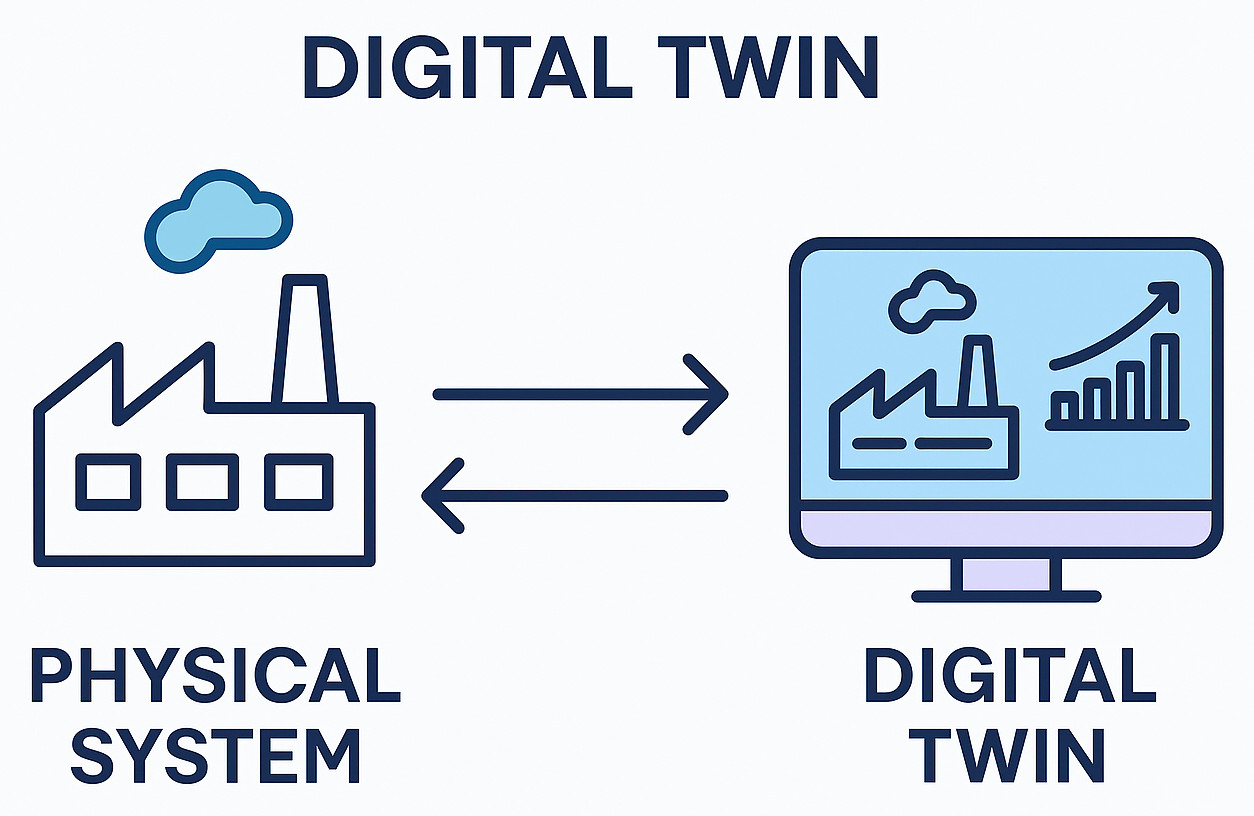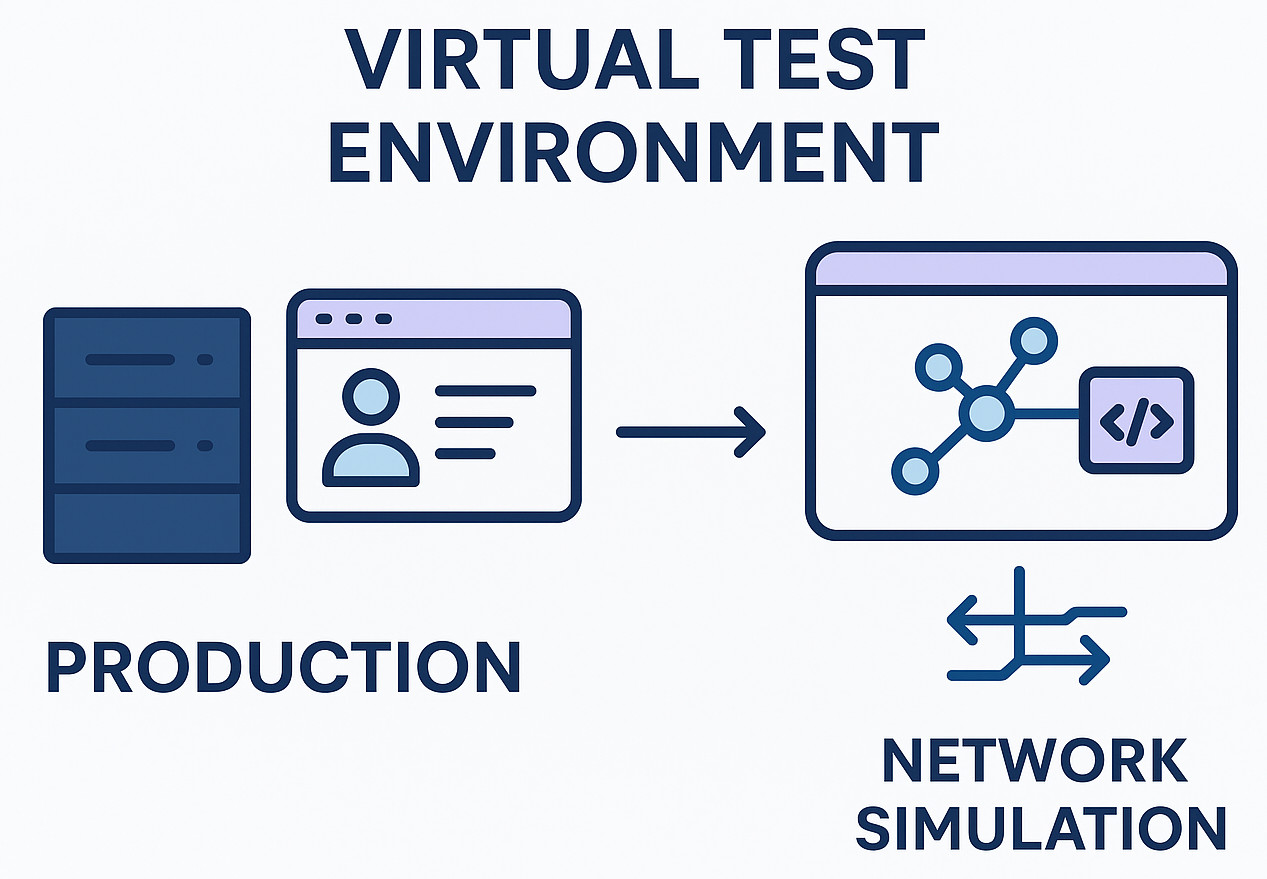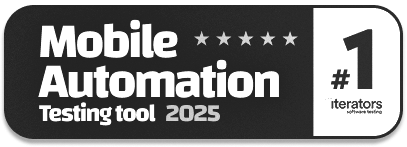Digital Twins in Software Testing Explained
|
|
With the swifter evolution of technology, organizations now want to validate software as practically as possible without having to wait for real-world failures to take place. Digital twins can help with that. While digital twins have long been used in sectors such as manufacturing, healthcare, and aerospace, their usage in software testing is rapidly increasing. In simpler terms, a digital twin helps teams to develop a virtual system, product, or process that works exactly like the real one.
This article will explain what a digital twin is, give simple examples, describe how digital twins are created, discuss types of digital twins, and explore how they differ from simulations.
| Key Takeaways: |
|---|
|
What is a Digital Twin?

Imagine you can build a living, breathing duplicate of an actual system that records its heartbeat, simulates its every action, and reacts to changes in exactly the same way as the original.
This is what digital twins manage to do.
In other words, a digital twin is a virtual version of an actual system that simulates its behavior using simulation models and real-time data.
The objective is to have a dynamic model that learns and adapts with the real system, and not just a copy. The twin updates if the actual system does. The insights gathered from testing the twin under stress can be utilized to predict how the real system might react in similar situations.
In the manufacturing industry, a digital twin can stand in for an assembly line or a jet engine, while in the software industry, it can mimic a real-world application environment, complete with users, devices, data, and APIs, but in a controlled virtual environment.
A Digital Twin Simple Example

Say, you are using an online banking app. Thousands of users are logging in, transferring money, or applying for loans in production. But testing risky new updates on actual customers is not something one should do.
As a result, you create a virtual environment that mimics your backend systems, databases, APIs, and even network traffic. This is the digital twin of your application. The twin behaves just like the live system after receiving replayed data, possibly a day’s worth of real user activity that has been anonymized for privacy.
- Prioritize the twin when releasing new code updates.
- Simulate spikes in traffic.
- Introduce fake server outages.
- See how the system responds.
All this happens without touching the actual environment or risking the user data. Digital twins are powerful in software because of this.
How Are Digital Twins Created?
- Data Collection and Integration: Logs, metrics, user behavior, and system performance data are all instances of real-world data that you collect. This makes your digital twin simulate the real world.
- Modeling and Simulation: After that, you build a virtual model that simulates the behavior of the real system. For physical systems, this could involve physics-based modeling. In software, this means simulating user behavior as well as databases, microservices, and APIs.
- Synchronization: Real-time data from sensors or telemetry systems is constantly added to the twin. This ensures that the virtual and physical versions continue to be in sync.
In terms of software testing, this means that your testing environment “lives and breathes” with the production environment. Every production event or update can be mirrored or replayed in the twin for analysis or pre-release validation.
Digital Twin Software and Tools
Organizations can now build and manage these virtual replicas with the help of a number of digital twin software platforms.
While some focus on cloud infrastructure and IT systems, others are built for industrial and Internet of Things systems (like Siemens’ MindSphere or IBM’s Digital Twin Exchange).
- Cloud infrastructure tools like AWS, Azure, or GCP.
- Container orchestration (Kubernetes, Docker).
- Telemetry platforms (OpenTelemetry and Prometheus).
- Automation frameworks that can simulate system and user behavior.
While enterprise-grade setups often need innovative integration and monitoring capabilities, teams can also experiment with free versions of digital twin software or open-source projects.
However, the real power of digital twins lies not just in the tools but also in how well they work with automation and testing systems. Tools like testRigor help and become vital in this situation.
Digital Twin Examples Across Industries
- Manufacturing: A factory might build a digital twin of the entire assembly line. Before applying the changes physically, engineers can verify by simulating the changes in workflow, machinery speed, or temperature.
- Healthcare: To predict maintenance issues or model patient care situations, hospitals use digital twins of medical equipment.
- Smart Cities: To simulate traffic patterns, energy utilization, and emergency reactions, city planners use digital twins.
- Aerospace: Digital twins are utilized by jet engine manufacturers to predict component failures and improve maintenance plans.
The same idea is now being applied by software companies to their infrastructure, APIs, and applications, making testing a more predictive and intelligent procedure.
Types of Digital Twins
- Component Twins: These represent a single part of a system, such as a distributed application’s single microservice.
- System or Asset Twins: These combine multiple components to form an entire system, like cloud-based SaaS apps or e-commerce platforms.
- Process Twins: These models complete processes, like CI/CD workflows, payment processing, and user onboarding.
- Digital Twin of an Organization (DTO): The most complex kind, which represents the entire company, including business logic, infrastructure, and workflows.
Systems and process twins are often used for software testing. They help DevOps and QA teams to simulate the full user experience and end-to-end system behavior.
Digital Twin vs Simulation: What’s the Difference?
Digital twins and simulations are not the same concept, despite the fact that many people confuse them.
Here’s another way to think about it:
| Feature | Simulation | Digital Twin |
|---|---|---|
| Definition | A one-time model or experiment is used to study behavior. | A continuously updated virtual model connected to real data. |
| Data | Uses hypothetical or static data. | Uses live or real-world data from sensors or systems. |
| Updates | Doesn’t change after it’s built. | Continuously learns and evolves with the real system. |
| Purpose | Prediction, training, or analysis. | Ongoing monitoring, testing, and optimization. |
A digital twin shows how the complete system behaves as it interacts with users, data, and environments in real time. The simulations, on the other hand, will show how a function behaves under specific inputs in software testing.
Digital twins are thus far more dynamic, data-driven, and continuous compared to simulation. This is in spite of simulation being a subset of digital twin technology.
Why Digital Twins Matter in Software Testing
- Users connect from different networks and devices.
- Data changes constantly in production.
- These variables can be duplicated in a controlled, testable manner using a digital twin.
- Realism: Instead of using idealized test data, you can verify how code behaves under real-world scenarios.
- Safety: Without risking production, you can simulate important failures (such as server crashes or API timeouts).
- Speed: As a twin, as constantly “on,” you can test more regularly and faster.
- Predictive Power: Utilizing historical data, you can predict possible malfunctions or performance issues.
This is especially useful in high-stakes or safety-critical systems where failure is not an option, like healthcare, banking, or autonomous cars.
Challenges of Implementing Digital Twins
- Complexity: It can be frustrating to build a faithful twin that duplicates every aspect of an actual system.
- Data Management: To prevent privacy concerns, you need anonymized, secure data streams.
- Costs: The required compute and infrastructure resources can be very high.
- Validation: You must ensure the twin accurately reflects the reality, even when it needs testing.
Most organizations pair digital twins with AI and automation tools to handle testing, monitoring, and validation at scale.
Bringing AI-Powered Testing into the Picture
AI-powered automation platforms like testRigor are important in this situation. Digital twins produce countless scenarios and massive volumes of data. It quickly becomes impossible to write test scripts manually or to maintain them for such dynamic systems. AI-fueled testing tools help resolve these issues.
- Natural Language Test Creating: Testers can build tests in plain English by leveraging tools such as testRigor, which don’t need coding.
- Self-Repair Tests: To reduce maintenance hassles, testRigor automatically modifies test scripts in response to changes in the user interface or workflow.
- Continuous Testing: AI-powered solutions are able to verify each new update in the twin environment by executing tests continuously in the background.
- Analytics and Insights: AI accelerates the interpretation of results by detecting patterns or anomalies in both twin and production systems.
By integrating digital twin environments with AI-driven test automation, organizations can move closer to continuous, intelligent testing. It refers to a testing process that is fast, intelligent, and aligned with how the system actually works in the real world.
How testRigor Fits into Digital Twin-Based Software Testing
- Running Functional Tests Against the Twin: testRigor can execute functional and regression tests against your digital twin when it duplicates the physical environment. Before you release updates to production, this ensures that each user journey works as expected.
- Continuous Validation: You can configure testRigor to run ongoing test suites in the twin since twins can sync with production continuously. This allows near-real-time identification of unexpected behavior.
- Testing under Simulated Conditions: You can use testRigor to see how your software responds to situations such as high traffic, API latency, or corrupted data in your twin.
- Easy Test Authoring for Complex Systems: Complicated systems can be easily represented by digital twins. Writing code-heavy test scripts for them is tedious. The English-based, no-code methodology of testRigor allows QA teams to build tests swiftly and readily adapt as the twin evolves.
- Integration with CI/CD Pipelines: Every deployment can automatically run tests in both your twin and staging environments due to the smooth integration of testRigor with CI/CD pipelines.
Digital Twin Software Testing: A Future-Ready Approach
It is important to note that digital twins are not a new idea. It was first used by NASA in the Apollo program, where engineers built physical models of spacecraft systems in order to test missions safely. However, the idea of building virtual twins with real-time feedback loops using data and software is new.
- Reduce downtime and prevent expensive bugs.
- Test systems in realistic, risk-free environments.
- Using real data, we can gain predictive insights.
- Integrate testing directly into the development lifecycle.
Conclusion
- Tests self-adapt as the system evolves.
- Create tests faster using natural language.
- Confidence is increased before pushing updates to production.
Digital twins allow you to see the system as a whole. The intelligent, automated, and twin-powered software testing of the future is already here.
| Achieve More Than 90% Test Automation | |
| Step by Step Walkthroughs and Help | |
| 14 Day Free Trial, Cancel Anytime |












